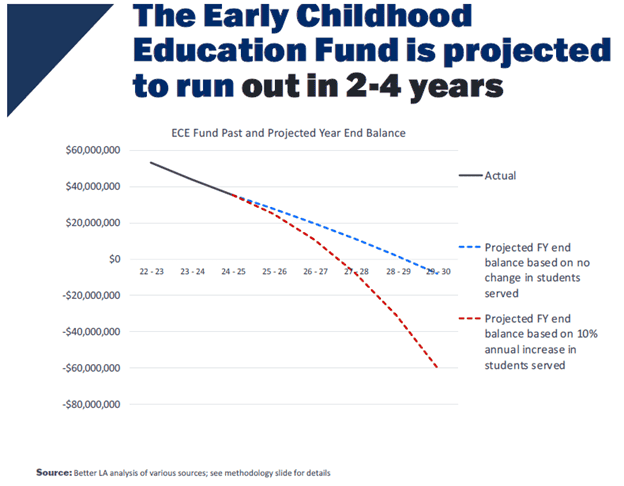4-day school weeks offer mixed, mostly negative outcomes for students – The National Desk


Report on the Impact of Four-Day School Weeks on Student Outcomes
Introduction
A recent report from University of Oregon researchers evaluates the effects of four-day school weeks on student outcomes. This review, conducted by the HEDCO Institute for Evidence-Based Educational Practice, analyzed 11 studies primarily from rural school districts across multiple states. The findings provide critical insights into educational practices aligned with Sustainable Development Goal 4 (Quality Education), emphasizing inclusive and equitable quality education and promoting lifelong learning opportunities for all.
Scope and Methodology
- The review focused exclusively on student outcomes related to the four-day school week model.
- Studies included districts from Oregon, Oklahoma, Colorado, and other states such as Arizona, Georgia, Idaho, Iowa, Kansas, Minnesota, Montana, Nevada, New Mexico, North Dakota, South Dakota, and Wyoming.
- Data were collected following consultations with public school superintendents considering the transition to four-day weeks.
Key Findings on Student Outcomes
- Overall Impact: There is no substantial evidence of large positive effects on student outcomes from four-day school weeks.
- Rural High School Students: Notable improvements were observed in on-time and five-year graduation rates, indicating potential benefits in rural settings.
- Elementary and Middle School Students: Four-day weeks were associated with decreased math and reading achievement, as well as increased chronic absenteeism and delayed progression in high school students.
- Non-Rural Districts: No evidence of positive student outcomes was found in suburban and urban districts implementing four-day weeks.
Contextual Factors Influencing Outcomes
- In rural districts, reduced travel time for extracurricular activities may mitigate learning time loss, supporting SDG 3 (Good Health and Well-being) by enabling better work-life balance for students.
- Community involvement plays a significant role; students often engage in productive activities such as farm work or family businesses on the fifth day, fostering economic growth and decent work opportunities in line with SDG 8.
- The wraparound supports available at schools, including behavioral health services and school lunches, are particularly vital for younger students, highlighting the importance of SDG 2 (Zero Hunger) and SDG 3.
Motivations for Transitioning to Four-Day School Weeks
- Cost Savings: Especially in rural districts, reduced transportation expenses contribute to more sustainable school operations, supporting SDG 12 (Responsible Consumption and Production).
- Teacher Recruitment and Retention: The four-day week is increasingly viewed as a strategy to attract and retain educators, aligning with SDG 4 by improving the quality of education through better staffing.
Future Research Directions
The research team plans to expand their review to include the impacts of four-day school weeks on school budgets and teacher recruitment, further contributing to sustainable educational development.
Conclusion
This comprehensive review underscores the complexity of implementing four-day school weeks and their varied effects on student outcomes. While some benefits exist for rural high school students, the model presents challenges for younger students and non-rural districts. These findings emphasize the need for context-sensitive educational policies that support the Sustainable Development Goals, particularly SDG 4, to ensure equitable and quality education for all students.
1. Sustainable Development Goals (SDGs) Addressed or Connected to the Issues Highlighted in the Article
- SDG 4: Quality Education
- The article focuses on the impact of four-day school weeks on student outcomes, which directly relates to ensuring inclusive and equitable quality education.
- The discussion on graduation rates, academic achievement, and student attendance ties into the goal of improving education quality and outcomes.
- SDG 3: Good Health and Well-being
- The article mentions behavioral health supports and school lunches, which are part of students’ well-being and health.
- Access to these supports may be affected by changes in school schedules.
- SDG 8: Decent Work and Economic Growth
- The article discusses teacher recruitment and retention, which relates to decent work conditions and employment in education.
- It also touches on economic factors such as cost savings from reduced bus operations in rural districts.
- SDG 10: Reduced Inequalities
- The article highlights differences in effects between rural and non-rural districts, pointing to inequalities in educational access and outcomes.
2. Specific Targets Under Those SDGs Identified Based on the Article’s Content
- SDG 4: Quality Education
- Target 4.1: Ensure that all girls and boys complete free, equitable and quality primary and secondary education leading to relevant and effective learning outcomes.
- Target 4.c: Increase the supply of qualified teachers, including through international cooperation for teacher training in developing countries.
- SDG 3: Good Health and Well-being
- Target 3.4: Promote mental health and well-being.
- Target 3.8: Achieve universal health coverage, including access to quality essential health-care services.
- SDG 8: Decent Work and Economic Growth
- Target 8.5: Achieve full and productive employment and decent work for all teachers.
- SDG 10: Reduced Inequalities
- Target 10.2: Empower and promote the social, economic and political inclusion of all, irrespective of rural or urban location.
3. Indicators Mentioned or Implied in the Article to Measure Progress Towards the Identified Targets
- Indicators related to SDG 4 (Quality Education):
- On-time graduation rates (including five-year graduation rates) – used to measure completion of secondary education (Target 4.1).
- Student academic achievement in math and reading – measures learning outcomes (Target 4.1).
- Student attendance and chronic absenteeism rates – reflect engagement and access to education (Target 4.1).
- Teacher recruitment and retention rates – measure supply and stability of qualified teachers (Target 4.c).
- Indicators related to SDG 3 (Good Health and Well-being):
- Access to behavioral health supports at school – implied as a factor affecting student well-being (Target 3.4).
- Access to school lunches – relates to nutrition and health coverage (Target 3.8).
- Indicators related to SDG 8 (Decent Work and Economic Growth):
- Teacher employment conditions and recruitment success rates – implied indicators for decent work (Target 8.5).
- Indicators related to SDG 10 (Reduced Inequalities):
- Comparative student outcomes between rural and non-rural districts – measure inequality in education access and quality (Target 10.2).
4. Table of SDGs, Targets, and Indicators
| SDGs | Targets | Indicators |
|---|---|---|
| SDG 4: Quality Education |
|
|
| SDG 3: Good Health and Well-being |
|
|
| SDG 8: Decent Work and Economic Growth |
|
|
| SDG 10: Reduced Inequalities |
|
|
Source: thenationaldesk.com

What is Your Reaction?
 Like
0
Like
0
 Dislike
0
Dislike
0
 Love
0
Love
0
 Funny
0
Funny
0
 Angry
0
Angry
0
 Sad
0
Sad
0
 Wow
0
Wow
0













































































